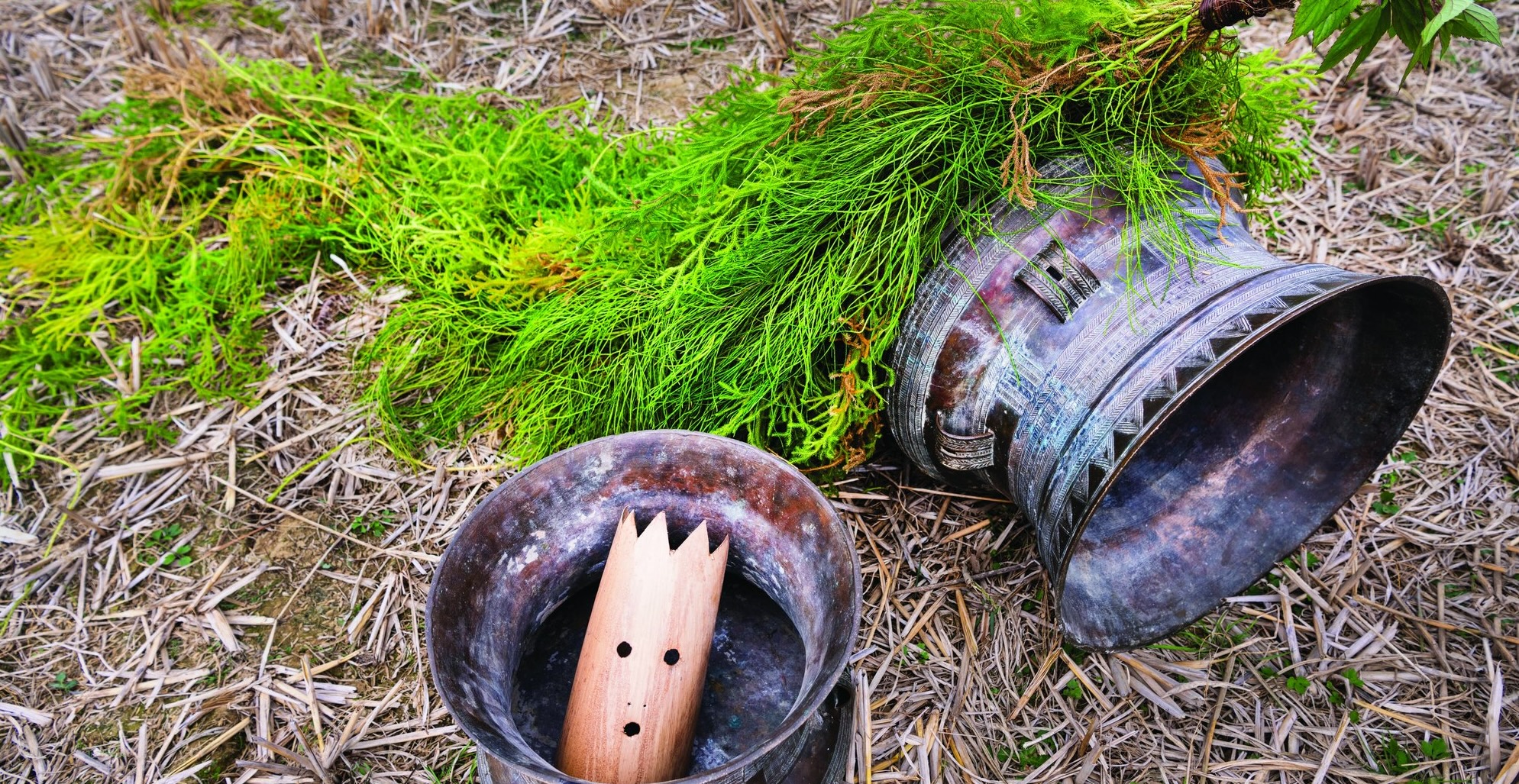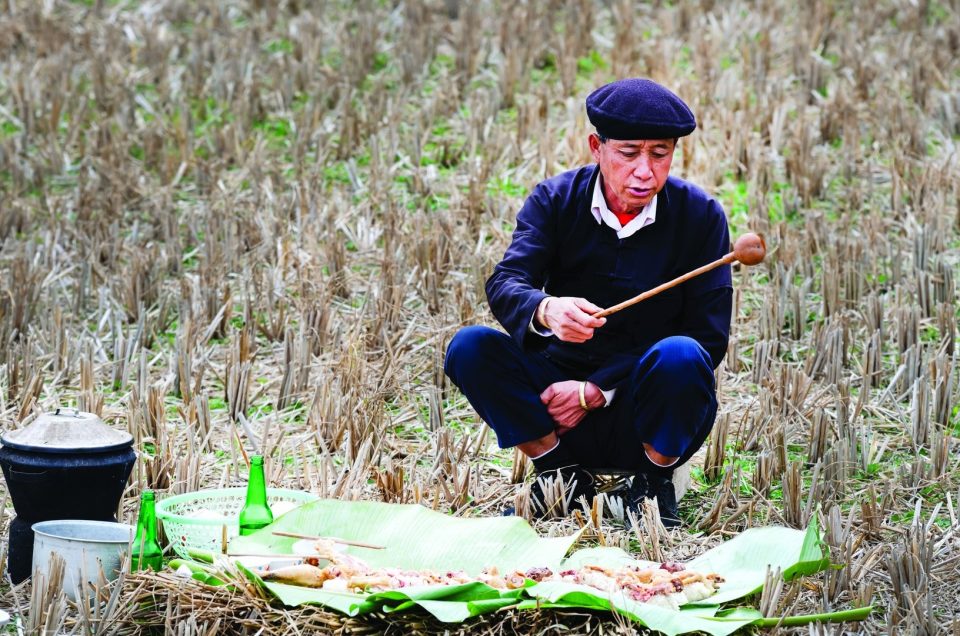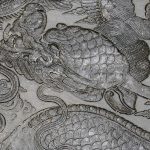Burning brightly
Like members of many ethnic groups that have lived on the rocky plateau of Ha Giang for generations, Lo Lo people in Lung Cu commune, Dong Van district, still preserve many unique traditional customs and rituals. Among these, the Ancestor Worship Ceremony held at the head of the family’s house from mid to late July of the lunar calendar is one of their most distinctive rituals, reflecting the worldview of Lo Lo people, as well as their family bonds and gratitude toward their ancestors.
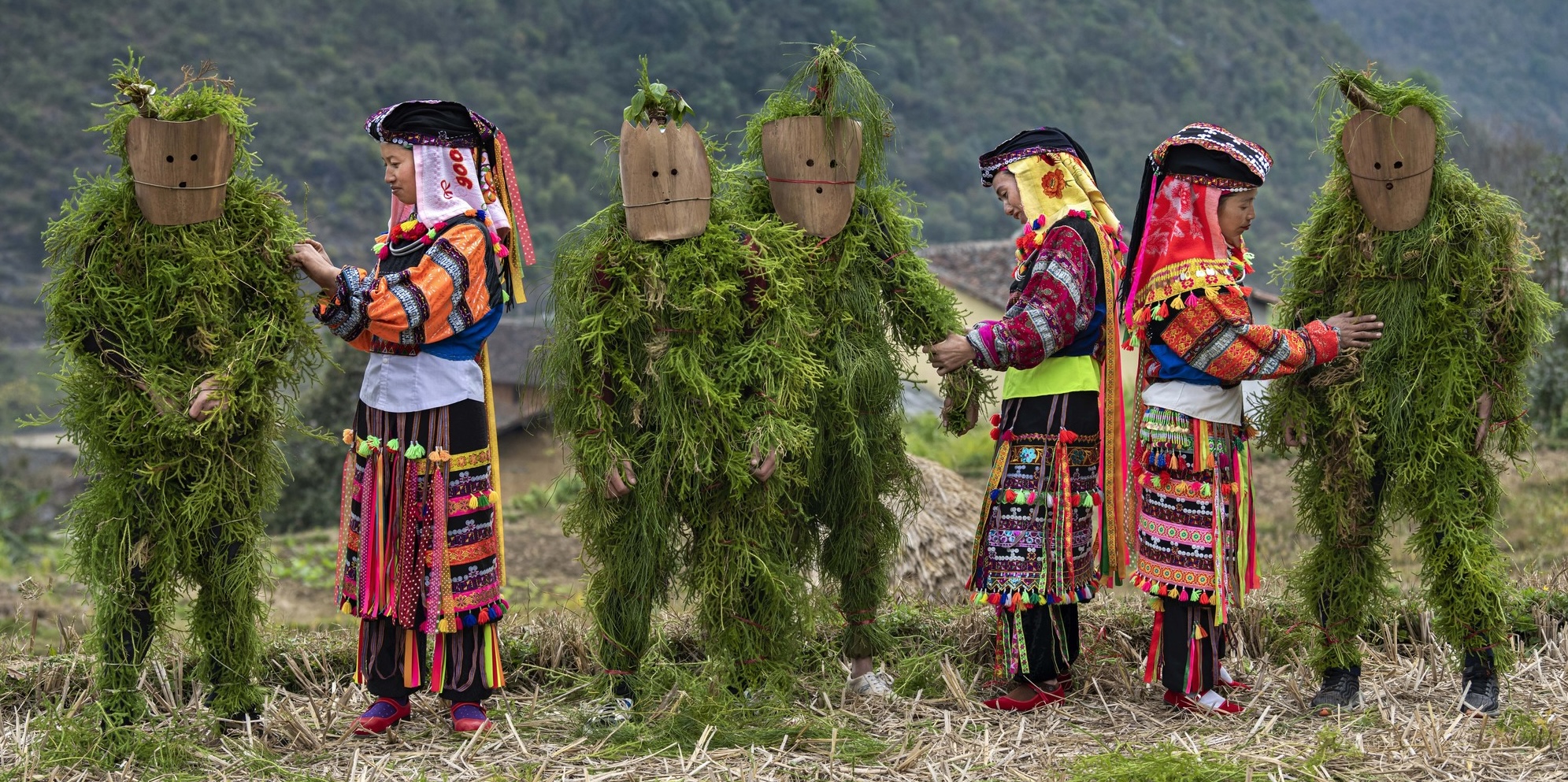
Lo Lo people worship their parents, grandparents, close ancestors (3rd and 4th generations), and distant ancestors (5th generation and earlier) at the eldest son’s house. The altar is typically placed against the wall in the central room, opposite the main door, with wooden figurines representing the souls of the ancestors placed above the altar. Each year, a Clan Ancestor Worship Ceremony is held at the head of the family’s house, where families gather to prepare and contribute offerings. In this ceremony, a pair of bronze drums – sacred treasures of the Lo Lo community, consisting of one male drum and one female drum – are indispensable. These drums are only used during important community rituals and festivals. The person invited to play the drums must be a respected individual, and is often an experienced artisan. The drums are the only musical instruments used during this ceremony.
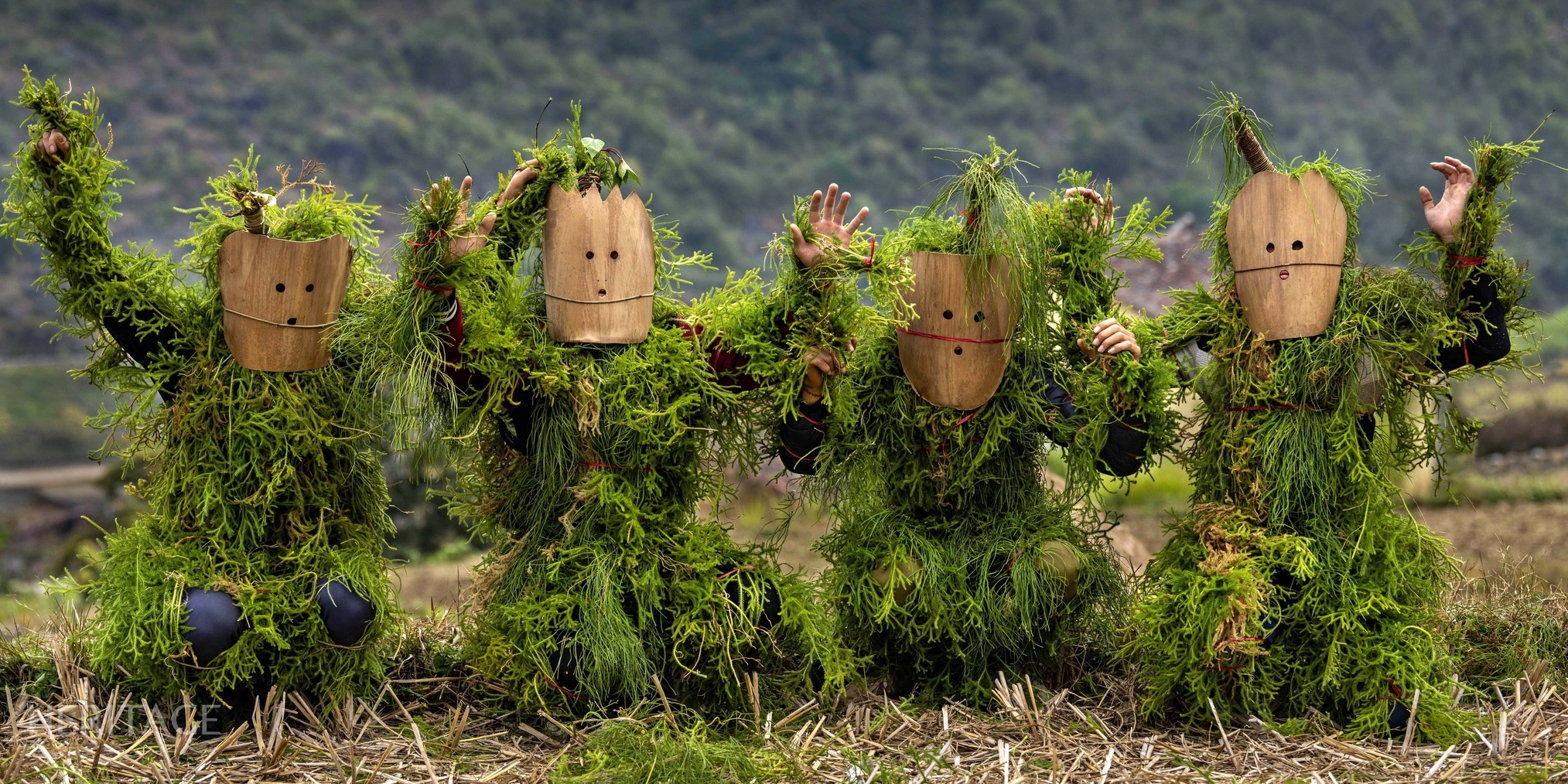
The ceremony begins when the shaman lights incense to invite the ancestors to attend, witness their descendants’ sincerity, and enjoy their offerings. The artisan beats the drums, and a dance procession forms, moving to the rhythm of the drums. The dance procession includes women from the clan dressed in traditional clothing and “grass ghosts”. The “forest people”, also known as “grass ghosts”, are individuals dressed in costumes made from “su choeo” grass found on the “chun ta” mountain, a peak known as the Spine. Su choeo grass is long, soft, tough, and easily woven into full-body costumes. The “grass ghosts” also wear masks made from bamboo. After dressing up, the “grass ghosts” dance to the drumbeats all day long. They are not allowed to eat or speak and must be careful not to stumble while dancing.
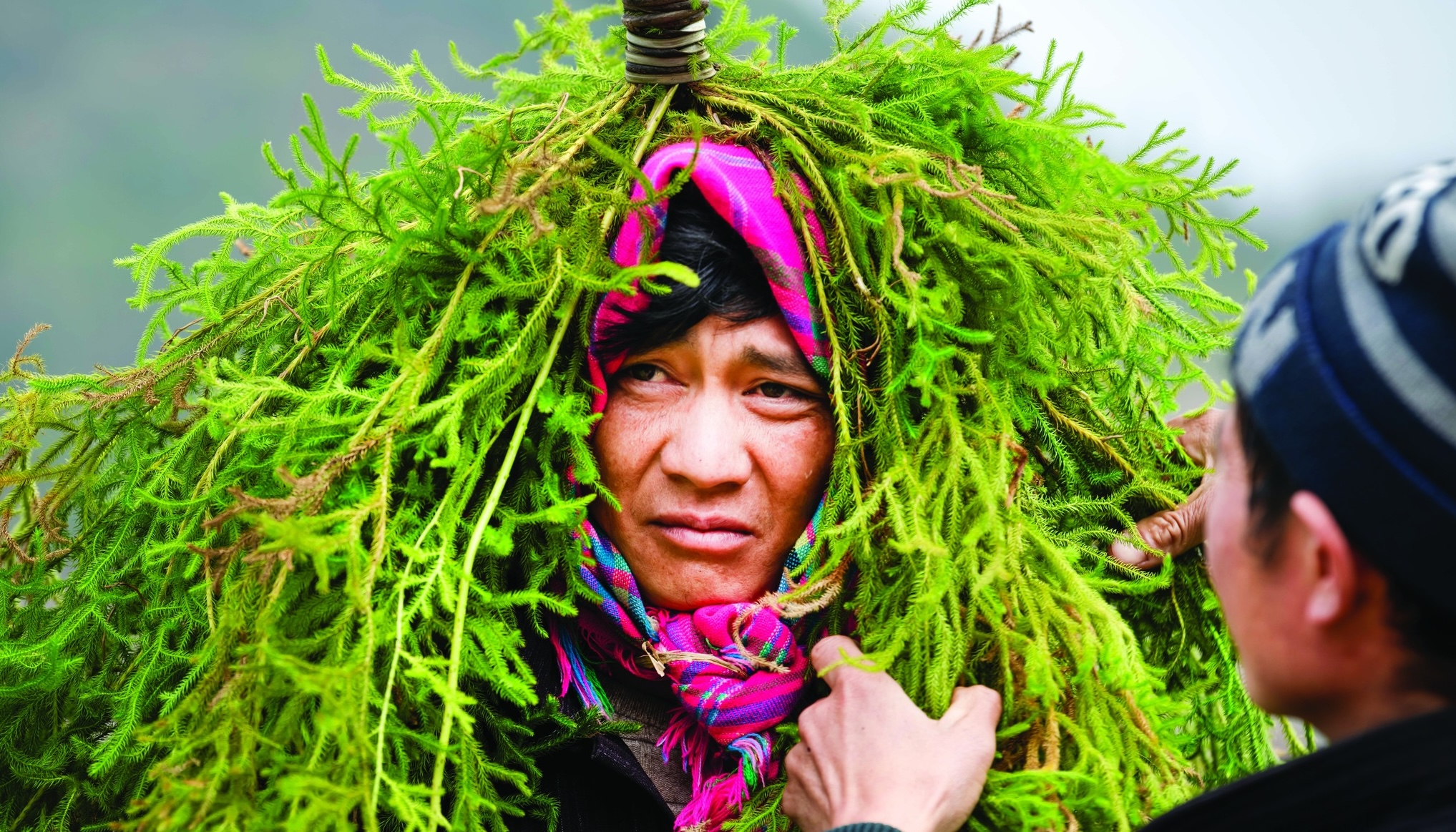
The dance of these “grass ghosts” is the most crucial part of this ceremony because Lo Lo people believe that these “grass ghosts” are their distant ancestors who, when living in the forest, had to wear clothes made from plants and grass. Today, for the ancestors to witness their descendants’ sincerity, the “grass ghosts” must lead the way. The “grass ghosts” act as a bridge between the descendants in the mortal world and the ancestors in the afterlife. Strong spiritual beliefs seem to enable the “grass ghosts” to dance tirelessly in time to the drumbeats from the beginning of the ceremony to its end.
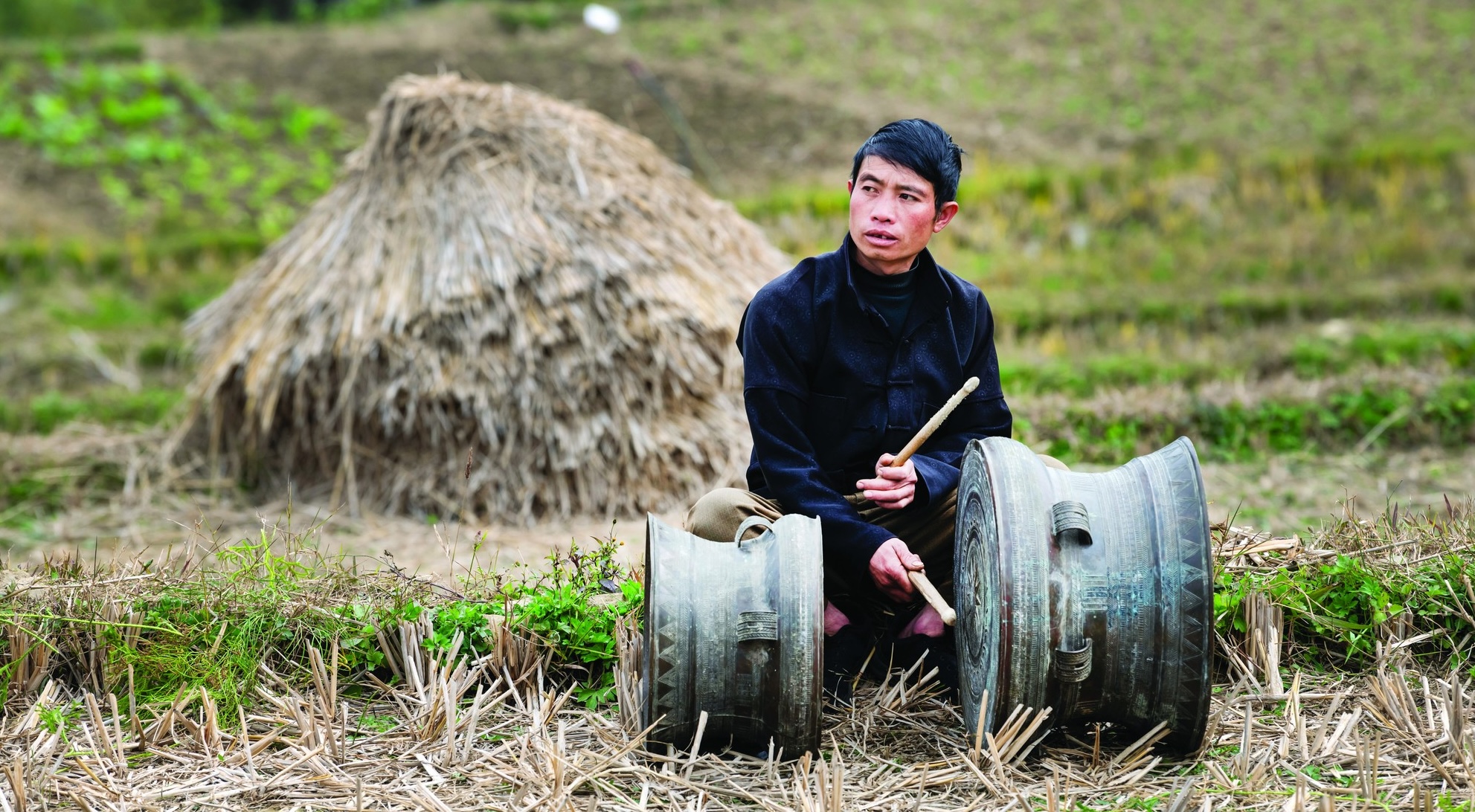
As night falls, the shaman conducts a ceremony to send off the ancestors. A large fire is lit in the middle of the yard. In the bright firelight, the shaman, on behalf of the clan, reports to the ancestors about the offerings from the descendants, and asks the ancestors to accept their sincerity and rest comfortably in the afterlife, and bless the descendants with good fortune. As the next day dawns, the shaman burns paper offerings to conclude the ceremony. Other offerings are prepared into various dishes, shared among the participants, and organized into a feast for the community to enjoy together.
